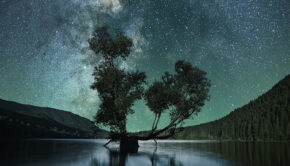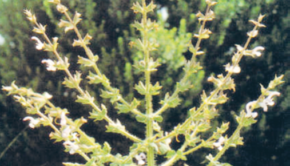Pesach, Stories and the Earth
As I was getting ready for Pesach, dusting my windows, lamp stands and dresser, I was thinking about entropy and how we are always running to keep ahead of the encroachment of disorder, dispersion and dissipation. Entropy, the second law of thermodynamics, says that the world is constantly moving towards disorder. There is always a leak in the system. Dust happens. It’s inevitable: a law of nature.
Actually, all of our environmental problems can be traced to entropy. As the ecologist Tom Wessels explains in his excellent book The Myth of Progress, this is because whenever energy is used, some of it leaks. Of course, energy in the universe can never be lost (that’s the 1st law of thermodynamics) but it leaks out of that particular system. That’s why whenever we drive a car there is some exhaust. The energy transformation of gasoline to movement can never be perfect. We are now using so much energy as a species that the planet as a whole is using more energy than we are getting from the sun through photosynthesis. The result is more disorder and loss of complexity: mass species extinction, soil degradation, and especially global warming are all aspects of this hard and fast equation: we are using too much energy and it’s causing the earth’s systems to fall apart.
Traditions also are subject to entropy. As a tradition is passed down from one generation to the next something is always lost. Errors creep in. Memories fade and books are lost. There is a feeling of getting further and further from the source. In Judaism we have an idea of yeridat ha’dorot, the decline of our knowledge throughout the generations. As we get further from the revelation at Mount Sinai, we get less and less clear about what was revealed.
But there is a counter-tradition. There seems to be a way of actually bending this iron law of nature. This can be illustrated in a couple of familiar Jewish stories. Actually, I think it’s the same underlying story, just told in different ways: One story tells of how the Ba’al Shem Tov, when the people were in trouble, went to a special place in the forest, lit a special fire and prayed a particular prayer. And it was enough to avert the decree against the people. His student, the Magid of Mezerich, faced with another crisis, knew the place in the forest, and knew the prayer, but had forgotten how to light the fire. And it was enough to avert the decree. His student, Reb Moshe Leib of Sassov, knew the place but had forgotten the fire and the prayer, and it was still enough to avert the decree. His student, Rabbi Israel of Rishin, didn’t know any of the proper elements of the ritual, but he could still tell the story . . . and it was enough to avert the decree.
I know the other version because it’s been made into a storybook that I read to my kids. It actually comes in two versions as well. In the original a Jewish man has an overcoat. It gets old and tattered, so he makes it into a vest, which also gets old, so he makes it into a tie. And so on and so on, until he makes it into a button, which then gets lost and he’s left with nothing. But, he redeems the situation when he realizes that he’s got just enough “material” to make a story. Of course, the overcoat is a metaphor for the tradition. In the other twist on the theme, the overcoat as a metaphor for the tradition is even more clear because it’s a small boy who gets a blanket from his grandfather when he’s born. When it get worn out his grandfather turns into an overcoat, which gets old, and so on.
In all of these stories we are given the inevitable forgetting and fraying of “material” — either traditional knowledge as in the Ba’al Shem Tov story, or the overcoat as a metaphor for tradition. But in the end, entropy is defeated. They can make “something from nothing.” They can reboot (to add a contemporary metaphor) because telling the story is not only recovering the past, it is renewing it. When we tell the story we make it our own — and so we participate, as it were, in a new revelation.
This Pesach, we all have the chance to tell our stories, the story of our tradition, a story of going from slavery to freedom. It is a telling that not only helps us remember the past, keep the tradition alive, but it also asks us to put ourselves into that tradition, make it our own. Get ourselves free. But how do we free ourselves from the inevitability of global entropy? We can’t change the equation. The only thing we can do is tell a new story. All animals, plants and the earth itself are part of the vast web of relationships that is the earth, but only we humans have the power to change its direction through choosing our stories. We have been telling a story of our power over the world, a story of the world as a machine, a story of inexhaustible resources and perfect predictability. We have been telling a story of our separateness. We need to start this year telling a story of our interconnectedness, our inter-dependence and our responsibility. This story has always been at the core of Judaism. We can still tell the story. Let us hope that it will be enough to avert the decree.





One Response to Pesach, Stories and the Earth